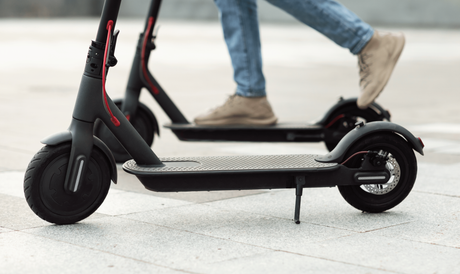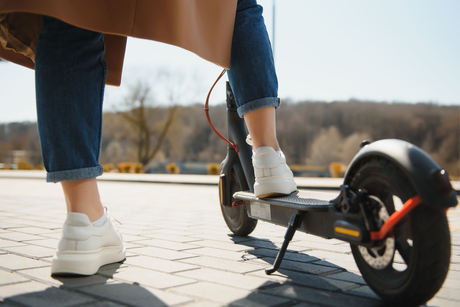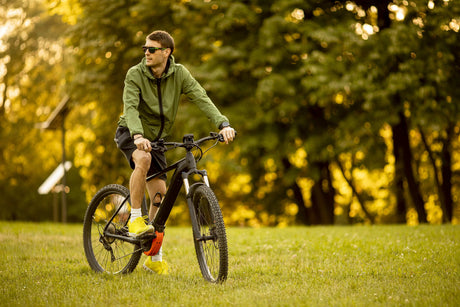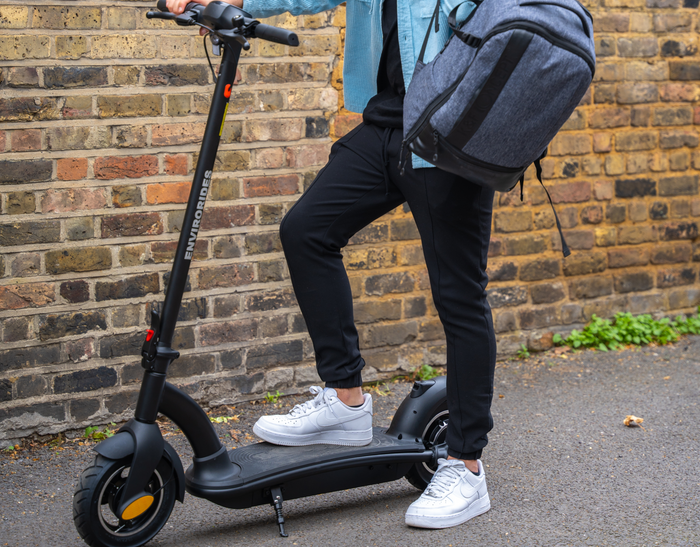In recent years, the popularity of electric bikes, commonly known as eBikes, has skyrocketed. Riders are drawn to the convenience, eco-friendliness, and sheer joy of gliding effortlessly on two wheels. One lingering question, however, echoes through the cycling community: Can eBikes go up hills?
Do eBikes excel at tackling hills?
Certainly! eBikes demonstrate remarkable prowess in conquering hills effortlessly. The effectiveness of hill climbing is largely influenced by the motor's capacity. A 250W motor handles hills adequately, but upgrading to a 500W motor provides the extra power needed for a significant push up steeper inclines.
Tips for climbing hills on an eBike
Climbing hills on an eBike can be a breeze with the right approach. Whether you're a novice or an experienced rider, these tips will help you navigate inclines more efficiently and enjoy a smoother uphill ride:
1. Understand Your eBike's Features
Familiarise yourself with the specific features of your eBike, such as motor power, battery capacity, and available assistance modes. Knowing your bike's capabilities will allow you to make optimal use of its features during uphill climbs.
2. Utilise Pedal Assist Wisely
Most eBikes come with pedal assist modes offering varying levels of support. Experiment with different assist levels to find the one that suits the terrain. Higher levels provide more power, making hill climbs more manageable.
3. Master Gear Shifting
Learn to shift gears efficiently, especially when approaching hills. Lower gears make pedalling easier, providing better control and stability on inclines. Practice shifting smoothly to maintain a steady cadence during uphill rides.
4. Balance Your Weight
Distribute your body weight evenly on the eBike, focusing on the centre. This balanced position enhances stability and control, preventing the bike from tilting backwards on steep ascents.
5. Use Throttle Mode Strategically
If your eBike features a throttle mode, use it strategically during steep climbs. Engage the throttle for an extra boost when needed, providing a break for your legs and making the ascent more manageable.
6. Maintain a Consistent Pace
Avoid sudden bursts of speed on hills. Instead, maintain a steady and consistent pace to conserve battery power and ensure a smoother ride. Gradual acceleration and deceleration help manage energy consumption effectively.
7. Choose the Right Route
Plan your route to minimize excessively steep inclines. Some eBikes handle moderate hills more efficiently than extremely steep ones. Consider alternate paths with a gradual incline to make your ride more enjoyable.
8. Keep the Battery Charged
Regularly charge your eBike's battery, especially before embarking on uphill rides. A fully charged battery ensures maximum power output and prevents unexpected power depletion during climbs.
9. Learn Body Positioning
Adjust your body position on the eBike to optimise efficiency on hills. Leaning slightly forward can help distribute your weight and improve traction, enhancing overall control.
10. Practice, Practice, Practice
Like any skill, hill climbing on an eBike improves with practice. Find hilly terrain to practice different techniques, gradually building confidence and mastering the art of conquering inclines.
Can Ebikes Go Down Hills?
Yes, eBikes can go downhill like traditional bicycles. E-bikes are equipped with similar features, such as brakes and gears, that allow riders to control their speed while descending. However, there are some differences to consider:
- Motor Assistance: E-bikes are equipped with electric motors that provide assistance to the rider. While going downhill, the motor may still provide some assistance, but it's typically less noticeable because the rider's pedalling effort is reduced.
- Regenerative Braking: Some eBikes have regenerative braking systems that can recharge the battery while going downhill. This feature helps in extending the overall range of the e-bike.
- Brakes: eBikes are equipped with traditional brakes (mechanical or hydraulic), just like regular bikes. It's important for riders to use their brakes judiciously while descending to maintain control and avoid excessive speeds.
- Handling: eBikes may be slightly heavier than traditional bikes due to the added weight of the motor and battery. This can affect the handling characteristics, so riders should be aware of the bike's behaviour and adjust their riding style accordingly.
- Speed: eBikes, especially those with a higher power output, can reach higher speeds than traditional bikes. Riders should be cautious and adhere to local speed limits and regulations, especially when descending.
Best E-bike for hills
The optimal ebike for uphill ascents combines a powerful motor, high torque, and a large battery capacity for sustained support. Multiple pedal assist levels provide flexibility, while a well-designed frame with balanced weight distribution enhances stability during climbs.
An efficient gearing system, smart motor control, and user-friendly controls contribute to a seamless uphill riding experience. Quality tires with good traction and a lightweight yet sturdy frame further ensure a safe and enjoyable ascent.
The best e-bikes strike a balance between motor power, battery capacity, and thoughtful design elements, making uphill riding more accessible and efficient for riders. Our "Endurance Pro Electric Bike" encapsulates all the essential features for optimal uphill ascents. With its powerful motor, high torque, and ample battery capacity, it delivers sustained support for challenging climbs.
FAQ’S
Do Motor Types Make A Difference?
A more robust motor plays a crucial role in enhancing climbing capabilities. E-bikes featuring crank drive motors, recognised for their superior power, stand out in delivering substantial assistance during uphill rides. Conversely, hub drive motors, although typically less potent, offer sufficient support, rendering almost all hills navigable, excluding the exceptionally steep ones.
Can an 250w eBike Go Uphill?
While individuals residing in highly mountainous areas may find increased power advantageous, the majority, even those without prior e-bike experience, can handle their needs adequately with a 250W motor.
Can a 500W eBike go uphill?
A 250W motor is suitable for uphill and everyday commutes, but opting for a 350W or 500W motor proves advantageous for individuals engaging in frequent uphill rides.
Can you go uphill on an eBike without pedalling?
It depends on a few things. If your eBike has a throttle, how much power does your e-bike have, how steep the hill is, and how long the climb is? If your eBike doesn't have a throttle, then you can't climb the hill without pedalling. Some bikes have a throttle, some have pedal assists.
What gear do you use when going uphill on an eBike?
To ascend a steep hill, begin by augmenting your power assistance and then shift to a lower and more manageable mechanical gear. If you find yourself navigating frequent inclines and declines on uneven terrain, be ready to promptly adjust both power and gear settings.
Which gear is best for riding downhill on an eBike?
When riding downhill on an eBike, it's recommended to shift into a higher gear. This helps optimize your pedalling efficiency and allows the bike to coast smoothly. By selecting a higher gear, you can take advantage of the momentum gained from the descent, enhancing stability and control while minimizing the need for continuous pedalling. Adjusting to a higher gear also helps prevent excessive speed build-up, promoting a safer and more controlled descent on your eBike.
How steep of a hill can an eBike go up?
You can ride an electric bike up hills with a gradient of 1 in 10 (10 per cent) with confidence and without any difficulties if you put in a significant amount of work. You can also overcome greater inclinations, up to a maximum grade of 1 in 7 (14 percent) or more. This is especially noteworthy in topographically diverse areas, such as hilly nations.
Conclusion
Navigating hills with an eBike is a transformative experience that blends technology, efficiency, and the joy of cycling. The versatility of electric assistance empowers riders to conquer various gradients with ease, making uphill journeys a seamless adventure. From the robust motors to the intelligent controls, eBikes redefine the boundaries of what's possible on the road.
If you own an electric scooter as well as an eBike, why not take a look at our blog on how to ride an electric scooter uphill?




